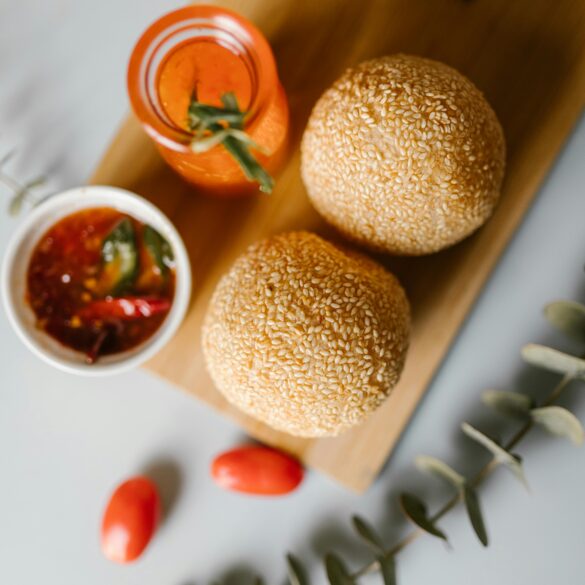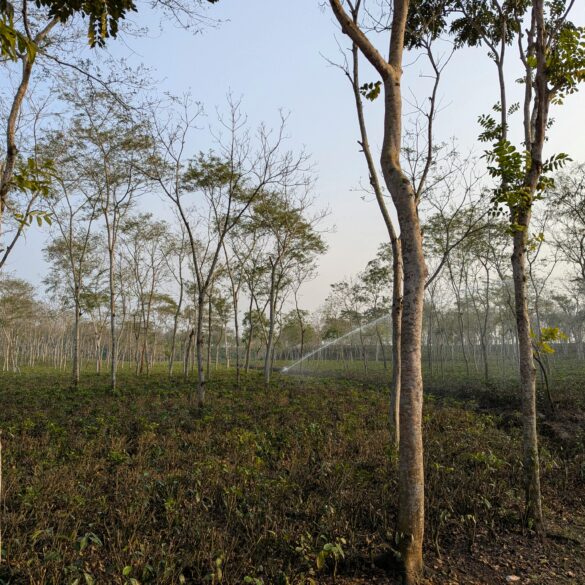Singapore Business Travel: 7 Proven Team Productivity & Comfort Strategies
Let’s start with a question I’ve heard at least a dozen times over the past year at executive roundtables: “What makes Singapore stand out as a business travel destination for corporate teams?” It’s not just the gleaming skyline, intricate MRT system, or famously efficient Changi Airport. Funny thing is, many first-time travelers overlook Singapore’s intricate web of proven strategies—from smart meeting venues to wellness-focused hospitality—that actually set it apart.1 Back in 2019, I was tasked with coordinating a regional summit for our Asia-Pacific team, and I’ll be honest: The learning curve was steeper than I imagined. In the months since, I’ve shifted from rookie mistakes to routine mastery—finding what truly drives productivity and comfort, especially when a dozen people from five different continents need to work (and rest) together in one place.
Why write this guide now? After the pandemic reshaped global mobility, corporate travel has become both more complicated—and more critical—than ever. Team morale, logistical efficiency, and bottom-line outcomes all hinge on getting the details right. So here’s my promise: You’ll find no generic packing lists or obvious travel tips here—just real strategies, led by data, tested by experienced travelers, and refined by tough lessons learned the hard way.
1. The Singapore Advantage: Why Teams Succeed Here
What really strikes me—and keeps Singapore top-of-mind for major global teams—is its meticulous attention to detail at every step of the traveler’s journey. From executive express immigration lanes to team-friendly hotel infrastructure, there’s a focus on efficiency that’s rare in other business travel hubs.2
- World-class infrastructure: Fast Wi-Fi everywhere, optimal connectivity, zero language barrier for English speakers.
- Safe and clean: Ranked as one of the safest cities globally for business travelers.3
- Efficient transit: Changi Airport consistently voted #1 in the world; MRT and private transfer options run like clockwork.4
2. Productivity Starts Before Departure: Smart Planning
Here’s what gets me about smart business travel: Much of the productivity a team gets in Singapore is actually locked in before anyone boards a flight. I used to believe on-the-ground choices mattered most, but, actually, tight pre-trip planning (venue selection, comfort logistics, wellness prep) determines how energized your team feels during crunch-time presentations.6
- Establish a clear travel schedule organized around optimal flight times and rest periods for international arrivals. Singapore’s time zone (UTC+8) means most European or US teams face jet lag; book arrival windows that buffer in 12-24 hours for recovery.
- Pre-book preferred transport (airport shuttle, limo, MRT passes) and confirm that hotel concierge teams know your arrival details. In my experience, only half of teams get this right the first time.
- Curate a team calendar with room for local immersion—cultural events, walking tours, or simple hawker market visits—to boost morale and refresh cognitive focus after meetings.7
Last October, I overestimated my team’s ability to jump straight from a late-night flight to a 9AM boardroom session. Let me clarify: the energy cliff hit hard. Adding a half-day buffer for arrival—plus a team breakfast at the hotel—changed everything at our next summit.
This is where Singapore shines. Executive planners can tap into dedicated business travel platforms offering seamless booking, expense workflows, and team calendars synced in real time. The difference? A tired team versus a thriving one—real game changer.
3. Hotel Hacks for Comfort and Wellbeing
Don’t settle for generic business hotels. Singapore’s top properties—like the Marina Bay Sands, The Fullerton, and Oasia Hotel Downtown—routinely offer team-centric amenities: pillow menus, blackout curtains, meditation rooms, even mobile office pods.8 I used to ignore these perks, but now I see how they transform team spirit.
- Book “executive floor rooms” so teams share breakfast lounges, not congested hotel buffets.
- Opt for properties offering onsite laundry and dry cleaning—huge for week-long stays and fast turnarounds.
- Choose hotels with in-room air purifiers; Singapore’s air quality is generally excellent, but local haze season can impact wellbeing.9
I remember a tough lesson: In early 2022, our team booked an otherwise “excellent” downtown hotel but missed the fine print on renovation schedules—the result? Jackhammers at 8AM for two days straight. Nowadays, I always call ahead, confirm noise schedules, and favor hotels with quiet zones.
4. Meeting Spaces That Drive Results
Singapore’s real competitive edge? Its next-level meeting spaces. Back when I first started planning offsites, I defaulted to hotel conference rooms. But venues like Suntec City Convention Centre, the National Gallery, and industry co-working spaces (e.g., JustCo and The Executive Centre) have redefined what’s possible.10
- Look for venues with modular layouts for both small breakout sessions and large group collaborations.
- Insist on advanced A/V setups (multiple screens, sound-proofing, hybrid call support). Many venues offer instant IT support and digital whiteboards.
- Ask about “flexible catering”: Singapore venues pride themselves on culinary excellence; locally sourced coffee breaks beat bland pastries every time.
It’s surprisingly common for teams to overlook ergonomic seating, adjustable lighting, and cognitive wellness features—let that sink in. I’ve seen top-performing teams lose steam at 4PM, all thanks to drab, inflexible rooms. My current thinking: Invest in a venue with daylight, greenery, and modular furniture. The difference? Meetings that run strong, all day.
| Venue Name | Key Features | Capacity | Unique Perks |
|---|---|---|---|
| Suntec City | Modular rooms, A/V | 10-500 | Zen Lounge, Direct MRT access |
| National Gallery | Historic design, natural light | 20-200 | Art tours, Rooftop gardens |
| JustCo | Coworking, hybrid calls | 5-60 | Flexible hours, Coffee bar |
Consider inviting a Singapore-based venue manager for a webinar or Q&A. These experts offer real insight into boosting productivity by customizing meeting setups. My team learned more in one conversation than from weeks of online research.
5. Seamless Transit: Transfers, Local Moves & Team Logistics
Ever notice how easily a poorly run airport transfer throws off an entire trip? Last month, our team spent 45 unnecessary minutes in Changi’s arrivals, waiting for a pre-booked shuttle with the wrong address. That’s a rookie mistake—but over time, I’ve learned to fix three major pitfalls:
- Book arrivals at least 24 hours before meeting times, especially on weekends or public holiday eves.
- Request “group check-in” at hotels to avoid individual counter waits. Many properties support this.
- Use the Grab app (local ride-sharing) for instant, safe, affordable transport. Set corporate billing for hassle-free accounting.12
- Get reusable EZ-Link MRT cards for local transit. These save time, reduce stress, and help teams explore neighborhoods efficiently.
“Stagger” team movements—don’t schedule everyone to arrive, depart, or transfer simultaneously. Those 10-15 minute buffers can mean catching up with last-minute emails or reviewing materials before meetings.
One more thing: Changi’s business lounges offer showers, nap rooms, and private office pods. If your flight schedule is tight, direct your team there for a quick refresh before heading into key sessions. It’s a simple upgrade—pricey but totally worth it for the right event.13

6. Technology Tools for Peak Productivity
In my experience, technology can either streamline or sabotage a team’s entire trip. Singapore, fortunately, is way ahead on the digital front. High-speed Wi-Fi is a baseline—not a luxury—and local mobile networks are robust enough for simultaneous video calls, cloud storage access, and hybrid meetings.14
- Setup eSIMs or local SIMs upon arrival—better reliability, lower costs than roaming.15
- Make use of Singapore’s “Smart Nation” apps: pay utility bills, access e-payments, book MRT rides, all from your phone.
- Use remote collaboration platforms—Zoom, Microsoft Teams, Slack, and Miro are well-supported and rarely blocked.
One mistake I made (and see others repeat): relying on hotel Wi-Fi for large group meetings. It’s fine for emails, but not enough for hybrid, multi-location calls. Invest in a local hotspot device for team leads; the cost versus lost time is negligible. Based on recent developments, some teams even run productivity dashboards tracking team location and meeting times—sounds “extra,” but it’s increasingly common.
7. Local Culture & Team Experiences
This is where I got passionate: maximizing productivity often depends on integrating local culture into the fabric of business trips. Singapore offers a dazzling array of culinary, artistic, and social experiences. Previously, I focused solely on meeting agendas, but team satisfaction and creative output soared when we started booking team dinner at a hawker center or attending a local festival.16
Singapore hosts over 100 business-friendly festivals and networking events yearly, from fintech conferences to design weeks. Teams can experience unique bonding opportunities outside of formal meetings.
- Organize a team “hawker food crawl.” Local vendors are legendary for quality and variety; plus, it’s incredibly affordable.17
- Tour Gardens by the Bay after hours—a relaxing way to inspire creativity and decompress after a packed agenda.
- Book a group session at the local “Escape Room” or outdoor teambuilding challenge.
On second thought, the less structured the downtime, the better teams seem to perform later. Last time my group was in Singapore, our most productive session followed a simple 45-minute walk through the Botanic Gardens—no agenda, just open conversation.
Wrap-up: Balancing Work, Wellbeing, and Wow Factor
Singapore offers more than efficient airports and fancy hotels—it’s the culmination of hospitality, innovation, and team-centric experience. If you’re planning a corporate trip soon, apply these proven strategies, personalize them for your team, and push for small, authentic moments that boost morale.19
Conclusion: Singapore’s Winning Formula for Corporate Teams
Here’s what I’ve realised after years orchestrating business travel for multinational teams: Singapore’s advantage isn’t just in its dazzling infrastructure, but in the subtle, human-centred touches—from streamlined arrivals to restorative downtime—that amplify every corporate trip. Teams achieve near-optimal productivity and real comfort. By now, you’ve seen the difference between rookie mistakes and peak performance, and, honestly, it all comes down to meticulous planning and authentic embrace of local culture.
Some of you might still wonder, does all this really matter? In my experience, it’s the small details that turn a stressful week into a transformative one. Fortunately, Singapore provides the infrastructure, hospitality, and local know-how to make every team trip shine. And if you’re building your next itinerary now, revisit these strategies, share them with colleagues, and tweak them to fit your own team quirks. It’s more than travel—it’s how teams evolve.
- Meticulous team-centric planning is the backbone of successful business travel.
- Hotel choice, meeting venues, and transit logistics directly impact morale and outcomes.
- Local culture immersion turns productive trips into memorable experiences.
- Singapore’s innovations—from tech to wellness—deliver measurable, lasting value.
References & Further Reading



